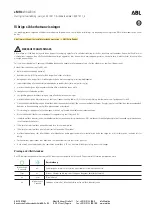
H30
CUSTOMER Q&A GUIDE
Category
Questions
Answers
Vehicle
overview
(10 items)
1. Does a Hydrogen Fuel Cell Electric
Vehicle (FCEV) have similar performance
to standard, non-electric vehicles?
FCEV performance characteristics are generally equivalent to stan-
dard vehicles, but with better noise control.
2. If water floods the fuel cell power module
compartment, due to heavy rain or flood-
ing for example, will it have any effect on
the vehicle?
Every component housed in the fuel cell power module compart-
ment is designed to be waterproof through evaluation which meets
the IP69K standard, so you don't have to worry about any potential
faults or safety problems if water contacts the fuel cell. However, if
the vehicle is fully flooded, have the vehicle checked by an author-
ized HYUNDAI dealer.
3. When starting or stopping the vehicle,
there's a noise. Is this noise cause for
concern?
The sound you hear is normal. The noise emanates from the blower
motor starting up to remove any residual water vapor in the fuel cell
system. Also, when you turn on the vehicle you may hear a brief oper-
ation sound from the hydrogen storage system which is located on the
back of the vehicle. This is a normal sound which is occurred when the
system tries to balance the pressure between the hydrogen tanks.
4. Is there a possibility that extremely cold
weather can prevent vehicle startup?
In most instances, the vehicle can get startup in cold weather with-
out any problems. However, the vehicle may not start if the vehicle is
parked with the ignition off for over a week in cold temperatures. In
this case, turn on the vehicle 2-3 times repeatedly. If you will not be
turning on the ignition for more than a week in cold weather, it is
recommended that you park the vehicle inside a building, if possible.
Notice)
In particular, make sure to park the vehicle indoor when the temper-
ature is below -30°C. If the vehicle is parked outside for over 12
hours under such weather fuel cell components may be damaged.
Also, avoid driving under such weather to prevent damaging the fuel
cell components.
















































